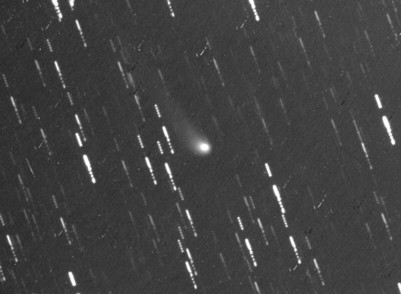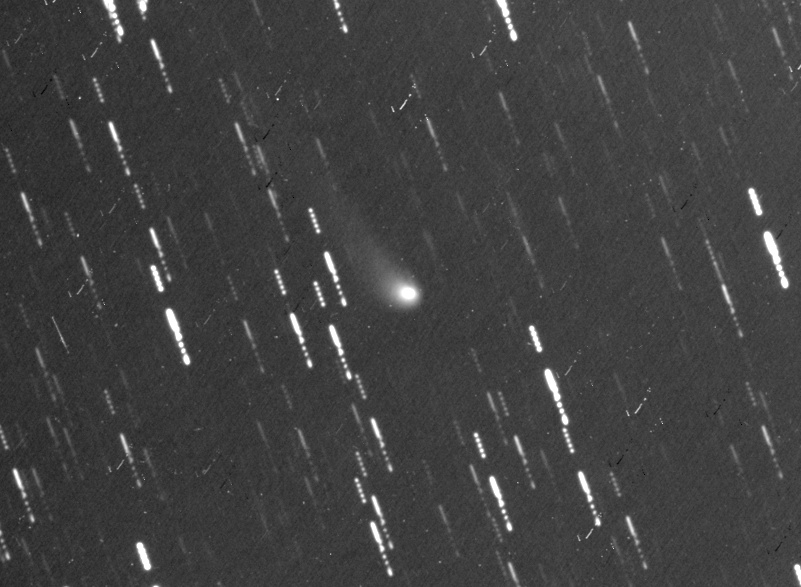According to the estimations made by the IAU (International Astronomical Union) and ICQ (International Comet Quarterly) information, Comet C/2005 L3 McNaught wasn’t supposed to be any brighter than magnitude 15 this month and in a slow decline in brightness. However, thanks to observations done by Joseph Brimacombe at Macedon Ranges Observatory, the “tale of the tape” shows a different story…
Currently located in Hercules (RA 16 16.65 Dec +20 12.8), recent observation estimates of around magnitude 13 have been confirmed thanks to Mr. Brimacombe’s photographic artistry. The ICQ reports have shown Comet C/2005 L3 McNaught slowly brightening since mid-March. Discovered on June 3, 2005 by R. H. McNaught of Siding Spring, the then 17.7 magnitude comet has slowly climbed the brightness ladder over the last 3 years. Reaching perihelion this year on January 16, L3 McNaught has surprised many astronomers – including observers.
Click On Image for Comet Movie – Courtesy of Macedon Ranges Observatory
Says Brimacombe – who was remotely controlling the telescope from his location in Abu Dhabi: “I took a few shots for fun and was surprised at how bright it was compared with barely visible Comet 110P Hartley (mag. 15.5). McNaught was supposed to be mag 15 and it’s easy to see the tail.”
Will Comet C/2005 L3 McNaught brighten as dramatically as Comet Holmes did? Chances are slim, but comets are mysterious creatures that seldom do what we expect them to. According to all the reports, L3 McNaught has great high surface brightness properties right now which will make it easier than most faint comets to spot with backyard equipment. Who knows what tomorrow might bring?
AVI and Still Photo Information:



“comets are mysterious creatures that seldom do what we expect them to”
TIme for new comet theories! Dirty snowball or snowy dirtball don’t come close to leading to reasonable, non ad hoc explanations of energetic comet events far from the sun.